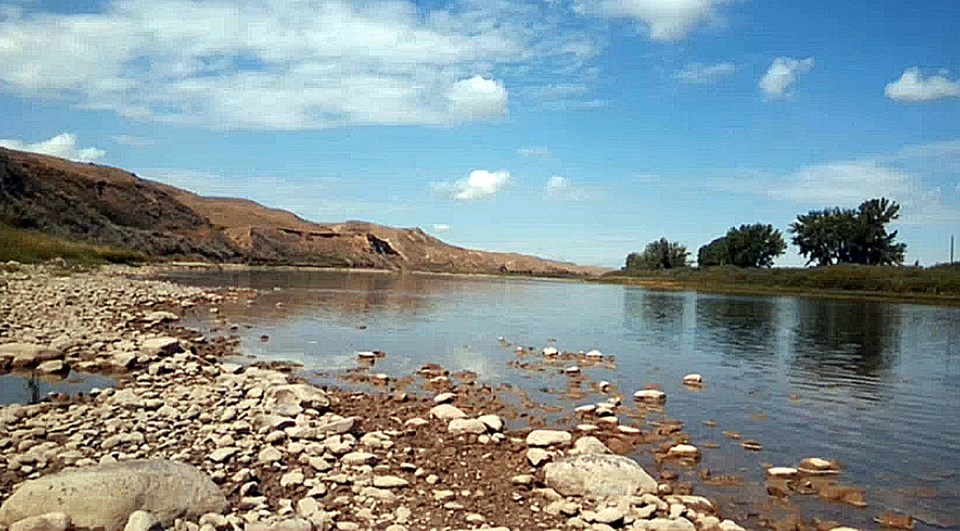INNISFAIL - The Mountain View Regional Water Services Commission (MVRWSC) is expecting a provincial government representative to be in town this week to offer clarity on the “surprising” announcement on Jan. 31 that drought talks are starting with major water uses to secure “significant and timely reductions” in water use.
These talks with major water users, including municipalities, were scheduled to begin on Feb. 1, and this week the Drought Committee for the MVRWSC was expecting to hear at least some answers from the province at a meeting in Innisfail.
“I thought it was kind of interesting that they sent it out. We knew there was something coming. They just said if we don't do something they will do it for us. That was kind of a surprise since they haven't met with anybody yet,” said Lance Colby, chair of the board of MVRWSC.
The provincial media release on Jan. 31 quoted Rebecca Schulz, provincial minister of Environment and Protected Areas, as saying the province’s efforts to contain the expected drought is the “largest water-sharing negotiation to have ever occurred in Alberta’s history” and that there would be “significant and timely reductions” in water use.
The media release also said “at least one water-sharing agreement” will be developed for each of the Red Deer River, Bow River and Oldman River basins, and there could be multiple agreements in place in some areas of the province.
“That was surprising. I don't know what they mean by multiple agreements,” said Colby. “We don't know really know what they want us to do yet, and until they give us an idea, like, ‘you have to cut 25 per cent’, then that would give us something to go on and we could say to the communities, ‘ok, look, here's what we have to do.”
However, he added the provincial government is showing a willingness to sit down with the commission and negotiate, and he told the Albertan late last week that he’s hoping a provincial representative will give the commission’s Drought Committee informative answers on Feb. 5.
“They (province) want to get all the organizations together and figure out where the water is going,” said Colby, noting the MVRWSC has one of the larger licences off the Red Deer River. “We'll see what the government has to say. We’ll know what they want us all to share, who we're sharing it with and how it's going to work.”
“That is what I am sort of stumped with,” he added. “How are we going to share water? What are they looking at because the towns are not the biggest users. Agriculture is one of the biggest users of water.”
According to provincial statistics, agriculture and irrigation combined amount to 46.6 per cent of Alberta’s water allocations, while oil and gas make up an even 10 per cent. Commercial and cooling accumulatively make up 23.4 per cent, while municipalities account for 12 per cent.
Minister Schulz said municipalities were asked back in December to work through how much water within their licence they’re actually consuming and what they might be able to do in terms of water conservation.
“And we are also reaching out and asking the same of our irrigators, agricultural producers and other major water users. What that allows us to do, is to have those users pull together what their drought plans would be so that we could have these conversations about what types of water sharing agreements we can enter into,” she said.
Colby said the commission already has an idea of the water use priorities its six-member communities require from a two-hour closed-door strategic planning meeting that was held on Jan. 24.
“And that's part of what we're doing now. We are looking at the daily use of water in the communities, and what's going to be impacted, like a hospital, senior lodges, or industrial users, anything like that that is going to impact them,” he said, adding he has not yet heard any strong reactions from local citizens or from the neighbouring agriculture community about the expected drought and its impacts.
“I think once we do get a definite position that the government is taking, I think that's when you'll see the reactions; people starting to wonder where the cutbacks will be and how much it'll impact them personally.”
In the meantime, Colby said the commission is keeping a close eye on who is buying water from each of the communities.
“We know exactly where it's going, who’s using it and what it is for because we can't be giving water away,” he said. “That is one of the big things that we want to get on top of. The province will see us being proactive.
“The best way for us to be proactive right now is to ensure that water use is not going for fracking and into other uses that aren’t what our plant was designed for.”



